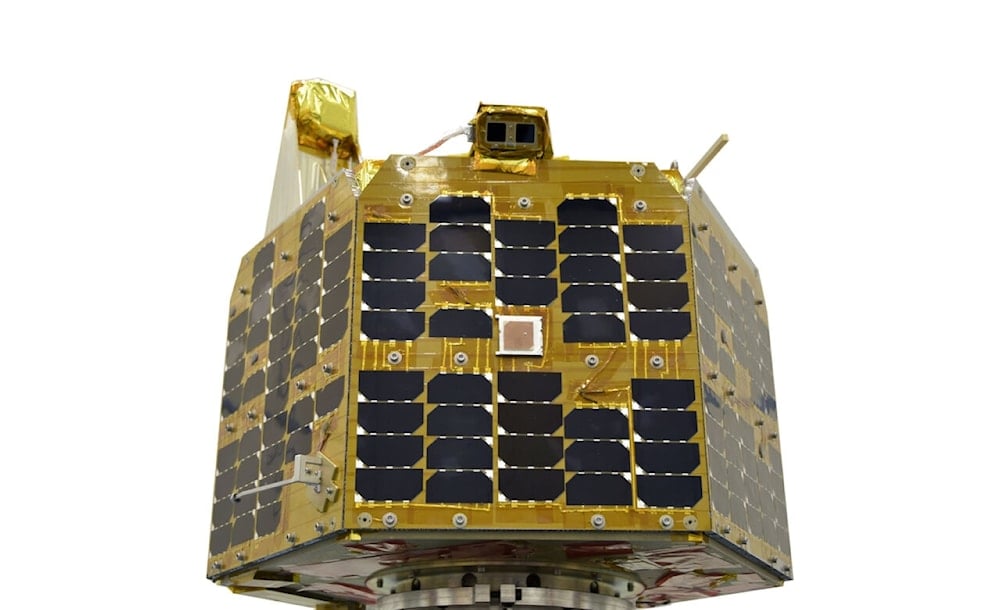Iran successfully launches Chamran-1 research satellite into orbit
Iranian media say the satellite was placed in a 550-kilometer orbit on Saturday morning using the Qaem-100 solid-fueled satellite carrier.
-

The Chamran 1 research satellite (Iranian media)
Iran has successfully launched the domestically-produced Chamran 1 research satellite into orbit, Iranian media reported.
The satellite was placed in a 550-kilometer orbit on Saturday morning using the Qaem-100, a solid-fueled satellite carrier developed by aerospace experts from the Islamic Revolution Guard Corps (IRGC).
The Qaem-100, Iran's first three-stage solid-fuel satellite launcher, was previously reported by official media to have successfully placed a satellite into orbit above 500 kilometers (310 miles) for the first time in January. That same month, Iran announced the simultaneous deployment of three satellites into orbit, shortly after the IRGC launched a research satellite.
The primary mission of Chamran 1 is to test hardware and software systems, specifically to demonstrate orbital maneuvering capabilities in terms of altitude and phase.
Additionally, the satellite will assess cold gas propulsion subsystems and the performance of navigation and attitude control systems.
Just hours after the launch, Chamran 1 transmitted its first signals back to Earth. The satellite, which weighs approximately 60 kilograms, was developed by Iranian Electronics Industries affiliated with the Defense Ministry.
Despite facing restrictions due to Western-imposed sanctions, Iran has continued to advance its space program in recent years.
Hassan Salarieh, head of the Iranian Space Agency, previously announced that six to eight domestic and foreign satellite launches are planned by the end of 2024. He added that the Tolou-3 and Zafar-2 satellites will be launched using foreign launchers in December 2024.
Salarieh pointed out that the activation of the Chabahar Space Center would enable access to various orbital inclinations.
The head of the Iranian Space Agency further announced the launch of the indigenous Kosar satellite, developed by the private sector, in November 2024.
Western governments, including the United States, have consistently cautioned Iran against conducting such launches, claiming the technology used could be repurposed for ballistic missiles, potentially capable of carrying nuclear warheads.
Iran, however, has firmly denied pursuing nuclear weapons, asserting that its satellite and rocket launches are solely for civil and defensive purposes.
Read more: Iran competes with world's top 5 leaders in air defense capabilities

 2 Min Read
2 Min Read








